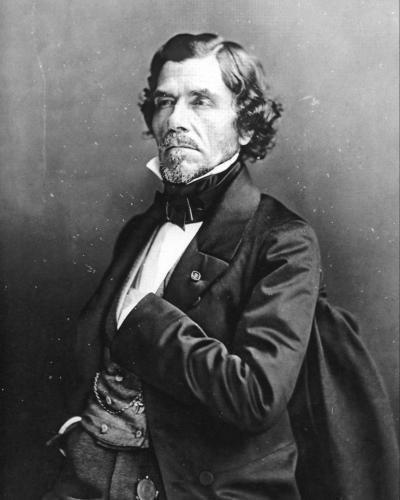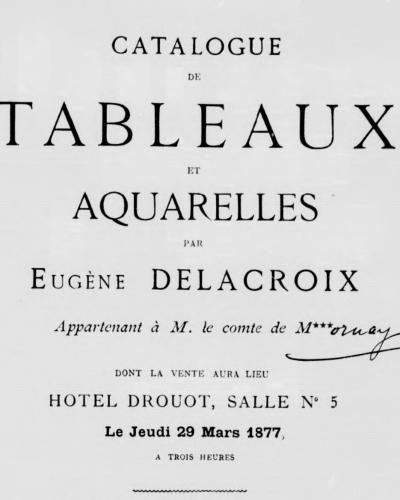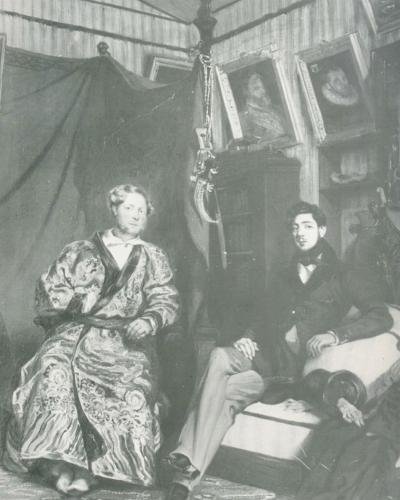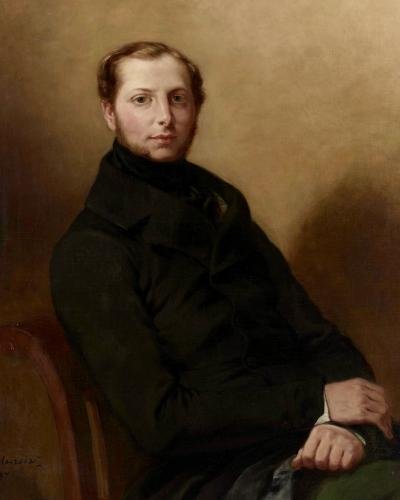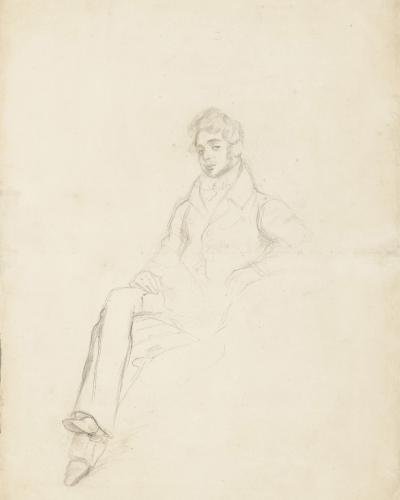The third artist covered in this overview is Eugene Delacroix (1798-1863). Here again, one finds a connection with Napoleon, that Demidoff would find of interest, given that Delacroix's older brother, Charles Henri Delacroix (1779-1845), was a 'war hero' from Napoleon's army while their father was Minister of Foreign Affairs.
In 1831, Eugene Delacroix, aged thirty-three, was invited by the Comte Charles de Mornay (1803-1878) to join his diplomatic mission to Morocco. The Comte de Mornay was a diplomat, who in 1831, obtained license as 'Envoy Extraordinary' of King Louis-Philippe to lead a mission to meet with the Sultan of Morocco. Delacroix agreed to join the delegation as 'artistic chronicler' of the voyage. Armed with his crayons and notebooks, Delacroix sketched a large number of scenes of local family life, festivities, ceremonies, and markets. The two would become close friends during their six month mission to North Africa that lasted from January to July, 1832. It would be on their return to France in 1832 and during two tedious weeks spent in quarantine in Toulon that Delacroix composed the majority of his series of eighteen watercolours that he gifted to the Comte de Mornay once in Paris. These colourful works would not come to light until they were placed on auction at the Comte de Mornay's estate sale of 29 March 1877 in Paris. Of interest is that the sale further included two oil paintings that have received little attention to date.
The Druout sale catalogue of March, 1877 presented, Lot 2, a painting simply entitled 'Interior'. In fact, this is Delacroix's 'double-portrait' from 1833 of the Comte de Mornay and Anatole Demidoff that was exhibited at the Salon of 1834. The Comte de Mornay's picture featured amongst three other paintings that were on display that were owned by Demidoff: 'The Execution of Lady Jane Grey' by Paul Delaroche, 'The Last Day of Pompeii' by Karl Bryullov, and 'The Death of Poussin' by François Marius Granet. Delacroix's 'double-portait' was made shortly following the return from North Africa. It captures the two friends, the Comte de Morany, ten years older than his young protégé, Anatole Demidoff, in relaxed conversation at the Comte de Mornay's Parisian apartment. It is assumed that the conversation would have touched on the recent exotic adventures in North Africa and that Delacroix's series of watercolours also would have been offered for viewing given Demidoff's deep appreciation of art. One can easily speculate that these colourful stories and images would have reinforced Demidoff's budding plans to mount his own 'exotic' voyage of discovery, that did take place only a few years later in 1837, where Russia's new lands in the south were extensivly explored and with the talented, Auguste Raffet, enlisted as 'artistic chronicler'.
The widespread positive attention received for the 'double-portrait' at the Salon of 1834, that prominently depicted Demidoff in the company of one of the 'lions' of society, would have served as a 'calling card' for Demidoff to secure entry into these same upper echelons of Parisian society. This strategy did prove successful given Demidoff's elevation to counting amongst the twelve founding members of the Jockey Club of Paris under president, Lord Henry Seymour. Other members included the longstanding banker and senior member of the Banque de France, Casimir Delamarre. The Royal Patrons and Honorary Members of the Jockey Club were the sons of the King of the French, the Duc d'Orleans and the Duc de Nemours. The 'young' Demidoff now counted amongst these 'lions'.
Demidoff would remain close to the Comte de Mornay and for many years. Following the Comte de Mornay's diplomatic posting to distant Sweden, Demidoff requested Delacroix in 1837 to raise a portrait of their mutual good friend. Demidoff would purchase two further paintings from Delacroix in 1840 and on the topic of exploring 'new worlds': 'Columbus and his Son at the Monastary of Rabida', dating to 1838 and 'The Return of Christopher Columbus', from 1832.
At the Universal Exhibition held in Paris in 1855 under Napoleon III, Delacroix at long last received the special attention deserved with forty of his paintings exhibited in a large room almost entirely dedicated to him. The news would have reached Demidoff who, in 1856, purchased the 'Moroccon Fantasy', dating to 1847 as well as 'Passage d'un gue au Maroc', from 1856. Demidoff supported and collected the works of Delacroix, and over decades, so believing in his artistic genius long before the rest of the world came to recognise his groundbreaking artistic talent.
In conclusion, this three-part paper provides only a brief and general overview of three of the French artists whom Demidoff actively supported and collected. A more thorough and profound investigation has yet to be undertaken and would need to cover the many other artists whom Demidoff avidly collected that included Ary Scheffer, Richard Parkes Bonnington, Auguste Raffet, and Theodore Gericault, amongst others. Ultimately, Demidoff was a passionate and informed collector of these many artists so was directly responsible for influencing collecting tastes for 19th century French Romanticism. In this quest, he was joined by other passionate collectors like the Rothschilds and the Marquess of Hertford, who, like Demidoff, would amass collections of spectacular size and quality.
